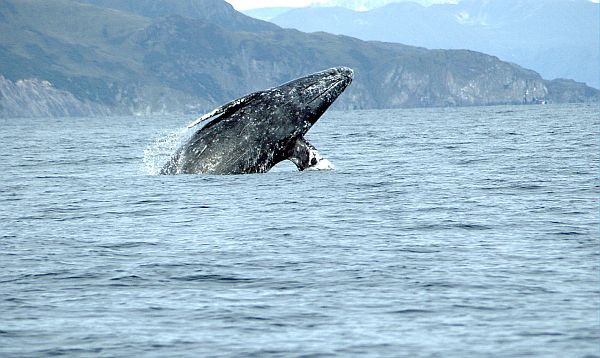Mexico City, Mexico – Nearly 1,000 gray whales have been born in Mexico since January, when the marine mammals began arriving in the country's coastal waters, according to a recent statement made by the Environment and Natural Resources Secretariat.
A total of 981 sightings of gray whale calves born in Mexican waters were made between Laguna Ojo de Liebre and Laguna San Ignacio, both located in Baja California Sur state. And some 1,438 adult gray whales have been sighted this season, which ends in April.
The 2013 season produced 1,713 whale sightings, of which 704 were of calves, up to March 3rd. Conservation policies have been effective, resulting in a "very healthy" whale population with "a tendency toward increasing," National Protected Natural Areas Commission, or CONANP, director in Baja California Sur Benito Bermudez said.
Mexico, where whale hunts have been banned for 70 years, created sanctuaries and protects the bays and coastal lagoons where the whales reproduce. Regulations implemented in 2010 control the observation of whales to protect the marine mammals, Bermudez added.
The whales, however, face threats from natural predators, oil spills, and large ships as they follow their migratory route through Canada, the United States, and Mexico, the CONANP official said in a statement. So the three countries must work together to protect the marine mammals.
Original Story


